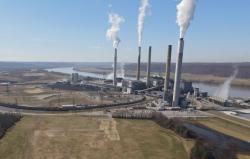
OR WAIT null SECS
© 2024 MJH Life Sciences™ and Turbomachinery Magazine. All rights reserved.
Shuttering of a US power plant indicates a burial for steam cooling of gas turbines
GE has said that it plans to demolish the Inland Empire Energy Center in California that features the steam-cooled H because the plant is no longer commercially viable in a state where wind and solar are proving to be more than cost-competitive.
“We have made the decision to shut down operation of the Inland Empire Power Plant, which has been operating below capacity for several years, effective at the end of 2019,” GE told Reuters. The plant “is powered by a legacy gas turbine technology ... and is uneconomical to support further.”
While launching the air-cooled HA and HB in 2014, Vic Abate, then President of GE Power and Water, had indicated that only 6 H-class units had been sold to date, 3 in Japan, two in the U.S. and in the UK. Part of the reason for this was the cost. “A steam-cooled H-class turbine is more costly and more complex in terms of maintenance and operations,” said Abate.
GE and other OEMs had all signaled that they were moving away from steam cooling in their quest towards building bigger and more efficient gas turbines.
In a filing with the California Energy Commission on Thursday, GE said the plant is “not designed for the needs of the evolving California market, which requires fast-start capabilities to satisfy peak demand periods.” A large market for the H turbine “did not develop and has resulted in an orphan technology installation at IEEC,” the filing said.
Only one other plant uses H turbines, Baglan Bay in Wales, says the Reuters report.
California approved the Inland Energy Center, located in Riverside County, about 75 miles (120.7 km) east of Los Angeles, in 2003 and the plant opened in 2009. One of the two Inland Empire turbines was mothballed in 2017, cutting the plant’s output to about 376 MW.
Developed with support from the US department of energy’s Advanced Turbine Systems (ATS) project, steam cooling was GE’s strategy to achieve the then benchmark of 60% combined cycle efficiency. Firing temperatures were raised to 1,430°C.
The turbine’s first-stage buckets and nozzles used single-crystal materials to withstand the higher temperatures. An innovative closed-cycle steam cooling system keeps combustion temperatures under control and hence NOx emissions in single digits.
The GE “H” design passes the cooling steam through the rotating blades as well as the fixed vanes and then back to the steam turbine. Complicated steam shaft seals are required and extra cost is involved as well as the consideration of steam pressure drop.
The DOE ATS project partnered with GE as well as Westinghouse. The Westinghouse steam cooling technology went to Siemens that bought Westinghouse. The Siemens G as well as the Mitsubishi G used steam in some stationary components unlike the GE version that uses steam cooling through and through – rotating as well as stationary parts. In fact the GE design was dubbed a rotating boiler by industry experts.
In its H class, Siemens used air cooling, dropping steam cooling altogether. Mitsubishi introduced an air-cooled G and proceeded toward developing the air-cooled J. While OEMs have already indicated their lack of interest in steam cooling, the shuttering of the plant draws the curtains on what was once touted as the cutting edge and future of gas turbines.



